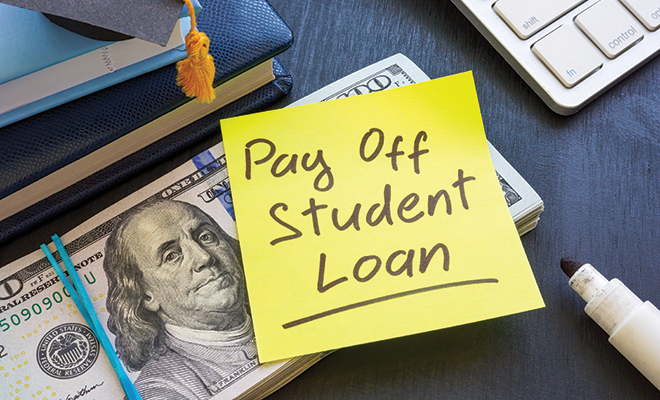
Are You Ready to Restart Student Loan Debt Payments?
“Student loan interest will resume starting on September 1, 2023, and payments will be due starting in October. We will notify borrowers well before payments restart,” the Department of Education said in a statement to CNN in mid-July.
Payments are due to start again in October for the first time since March 2020. Although the current administration created SAVE, a student loan forgiveness program, the Supreme Court ruled against the plan to forgive billions in federal student loans. What does a borrower do?
When do I have to start repayment?
In October 2023. Check with your student loan servicer for the exact date. Confirm your personal information, loan amounts, interest rates and payment plans. Also enroll in auto-debit, which will keep you on track.
What happens to interest?
Interest will begin accruing again on September 1. President Trump ordered a pause on interest at the start of the pandemic, which has ceased.
What if I can’t afford the payments?
Finance expert Jill Schlesinger advises, “If your financial situation has changed, go to studentaid.gov and use the loan simulator to determine if a different repayment plan better meets your needs or if consolidation might help. There are income-based plans as well as public service loan forgiveness programs that can help.”
The following information and statistics are published on the Department of Education website. “The Saving on a Valuable Education (SAVE) Plan replaces the existing Revised Pay As You Earn (REPAYE) Plan. Borrowers on the REPAYE Plan will automatically get the benefits of the new SAVE Plan. The SAVE Plan, like other income-driven repayment plans, calculates your monthly payment amount based on your income and family size. The SAVE Plan provides the lowest monthly payments of any IDR plan available to nearly all student borrowers. The amount of income protected from payments on the SAVE plan will rise from 150 percent to 225 percent of the Federal poverty guidelines. This change means a single borrower who earns less than $32,805 a year ($67,500 for a family of four) will not have to make payments. As a result, we estimate that more than 1 million additional low-income borrowers will qualify for a $0 payment, including 400,000 who are already enrolled on the REPAYE plan and will see this benefit applied automatically. This will allow them to focus on food, rent, and other basic needs instead of loan payments…A single borrower would save $91 a month on payments ($1,080 a year), while a family of four would save $187 ($2,244 a year).”
What is the Temporary On-Ramp program?
It’s a program announced recently by the Biden administration. For one year, starting October 1, 2023, people who miss student loan payments won’t go into default, won’t be referred to a debt collection agency and won’t take a hit to their credit score.
What happens if I don’t pay back my loan?
Try to meet your loan obligations. But the federal government has rolled out another program that will protect borrowers for 12 months through September 30, 2024.
As of this writing, the president announced he’s directed Education Secretary Miguel Cardona to start a process under a law known as the Higher Education Act to forgive loans, “compromise, waive or release loans under certain circumstances.” During the on-ramp period, the Department of Education won’t refer borrowers who miss payments to credit agencies or consider them delinquent, the White House said.
“I’m announcing today a new path consistent with today’s ruling to provide student debt relief to as many borrowers as possible as quickly as possible. We will ground this new approach in a different law than my original plan, the so-called Higher Education Act,” Biden said. “This new path is legally sound. It’s going to take longer, but in my view it’s the best path that remains to providing as many borrowers as possible with debt relief.”
Missed payments shouldn’t impact your credit report immediately. Borrowers won’t be considered in default or referred to collections during this period. Interest will continue to accrue, but it will not capitalize at the end of the on-ramp period.
Are there other plans I can qualify for?
Public Service Loan Forgiveness, or PSLF, allows qualifying federal student loans to be forgiven after 120 qualifying payments while the borrower is working for a qualifying public service employer. Working in public service, such as government service that includes federal, U.S. military, state, local, or tribal, or certain non-profit organizations may qualify you for PSLF. Your employment may also qualify if your employer provides certain types of qualifying public services.
The hope is that the 12-month period will give borrowers time to adjust, ultimately make their monthly payments and meet their financial obligations. Check with your student loan servicer for current program details
Sources: studentaid.gov, wvtm13.com, cbsnews.com, consumerfinance.gov and www2.ed.gov.







